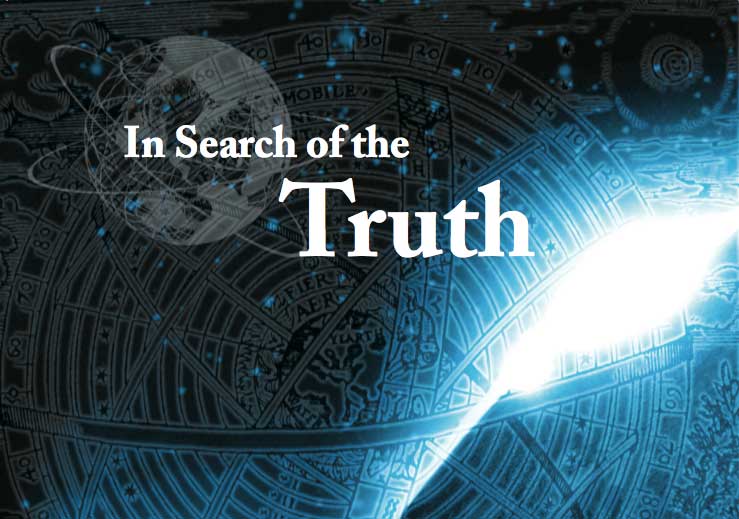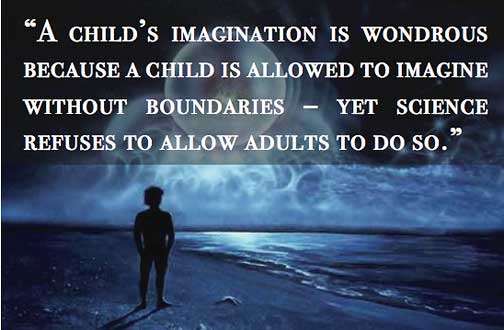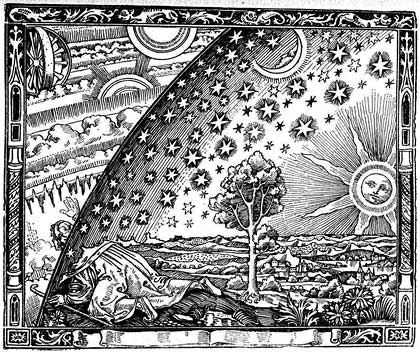
Almost everyone, including scientists, religionists and philosophers, are engaged in a noble search for truth. Yet, what is truth and how do we find it?
Scientists have made great strides with their speculations, postulations, hypothesis and analysis of the creation — the universe we live in. Yet we see that the latest theories always seem to have some imperfections and exceptions, wherein it doesn’t quite work or falls short. For example we have seen classical physics evolve to relativistic mechanics and wave mechanics, which in turn evolved to quantum mechanics, with each theory giving better approximations, ever closer to explaining the reality we live in.
Every theory explains much, yet is incomplete and the small failures force new quests for the truth and newer theories emerge, none providing a complete and perfect answer. Although quantum mechanics apparently provides the best explanation available on a microscopic level at this time, even Einstein had serious doubts with its methodology and probability predictions, stating, “I am sure that God does not play dice.”
Difficulties exist in every scientific theory. This can be demonstrated by looking at some of the more fundamental laws. For example, the simple equation showing the gravitational attraction F = Gmm’/r2 between two masses in conjunction with Kepler’s laws of planetary motion, when analyzed on the scale of the universe has a very large problem. There simply isn’t enough mass in the universe to account for the entirety of the gravitational attractions calculated and observed in the universe. Therefore scientists postulate that there is an elusive element known as ‘Dark Matter.’ This hidden dark matter is necessary to balance the equations of motion for the planets and stars. Yet scientists are baffled as to where this matter is or what it actually is. They can detect its effects by observing the bending of light from distant stars. In other words, they know that the presence of some matter is there but what that matter is eludes them.
Similarly, it was once thought that protons, electrons and neutrons were the building blocks of all atoms and were the smallest indivisible items from which all else was built. Yet recent experiments and new calculations and theories have revealed the existence of finer divisions into smaller entities – quarks, bosons, leptons, etc, which in turn are made of even finer strings, as per the String Theory. Physics is ever expanding as the reality it attempts to explain continues to shift. Yet that reality continues to remain out of the grasp of the latest scientific theories.
Einstein has proven in his famous theory of relativity that nothing can travel faster than the speed of light or even close to that. Of course, nowadays it is common to find science fiction-like exceptions to this rule. In fact it is quite often difficult to tell where fiction becomes fact or fact is really fiction. However, NASA spent years and billions of dollars researching Time Warp Drives – a concept made famous in the popular science fiction show Star Trek.
In Star Trek the so-called ‘Warp Drive’ was used to power the Star Ship Enterprise. The concept is similarly mentioned in the movie Contact, where a space vehicle travels thru wormholes (a tunnel through time-space) to reach a distant planet many light years away. In the more recent movie, Race to Witch Mountain, wormholes are also used as a means of travel. But of course, this is totally science fiction, or the fantasies of overly imaginative minds. Certainly, it is fantasy at best.
Perhaps such movies are science fiction, but the best science fiction is always based on real science and is merely extended by brilliant conceptualizations. Wormholes are predicted and understood by mainstream physics as viable constructs. They are not fictional – the physics of wormholes works in theory. Miguel Alcubierre Moya is a Mexican theoretical physicist who is best known for his paper, The Warp Drive: Hyper-fast Travel Within General Relativity, which introduced the theory of the ‘Time Warp’ as a realistic concept. A great number of scientists found his theories viable, although improbable to put into practice in any shape or form.
The theoretical physics of this concept was considered viable enough that NASA funded research on ‘Time Warp’ as a possibly worthwhile means of space travel and an entire department of NASA was funded by the US government and dedicated itself to researching this subject. After the better part of ten years of dedicated research, NASA threw in the towel on this project, although the lead NASA scientist, Marc Millis, founded his own institution, the Tau Zero Foundation, to continue the research privately. Marc Millis headed NASA’s Breakthrough Propulsion Physics Project from 1996 to 2002.
Recently, Marc Millis and Eric Davis of the Tau Zero Foundation released the book Frontiers of Propulsion Science, a compilation of emerging science relevant to interstellar propulsion technologies. It is published by the American Institute of Aeronautics and Astronautics (AIAA) as part of their Progress in Aeronautics and Astronautics series.
Science of today is simply not advanced enough to solve the physical problems found. Yet the physics involved in the concept of time warp space travel is real and theoretically possible.
All scientific theories are not revealed by a systematic study of nature and many times totally bizarre conceptualizations and strange intuition have resulted in great scientific discoveries. For example, the benzene molecular structure was conceived by Friedrich August Kekulé, a German chemist, from a strange dream of a snake chasing its tail. He did not discard his thoughts from this dream but applied them to his research and thereby achieved a great breakthrough.

This line of reasoning illustrates that the frontiers of science are still vastly short of solving many of the challenges facing them. They are stifled by their small world of limited perception and are further restricted by that science available as tools for their understanding. In general, scientists restrain themselves to the formal thought process, a process that does not allow them to be open-minded when considering metaphysical topics in the realms of spirituality and religiosity.
In order to remain open-minded and ready to accept science’s multifarious discoveries, it is sometimes necessary to consider seemingly impossible or unlikely prospects. A child’s imagination is wondrous because a child is allowed to imagine without boundaries – yet science refuses to allow adults to do so. In order to expand our horizons and achieve breakthroughs in research it is necessary to allow our imagination to function without restriction.
When was the idea of space travel or even flight first conceived? Many would say it began with the Wright brothers or with Leonardo Da Vinci, who conceived and designed many flying contraptions, even though he did not build them. However, if we look deeply into this subject we find that the earliest reference is in the Vedas, India’s ancient books of wisdom. Here, vimanas, or flying machines are mentioned quite regularly.
The brahmastra sound weapon, mentioned innumerable times throughout the Vedas, is the ancient equivalent of modern missiles, yet is much more sophisticated. These weapons were invoked by sound and were capable of being aimed at one target, leaving all else untouched. Further mentioned is the pasupata, a weapon of total destruction, much like the nuclear bomb of recent times. Not only were such advanced concepts mentioned in the Vedas, but they were also practiced.
According to reliable mainstream sources, many critical mathematical and scientific concepts are attributed to the ancient Vedas and are often found within their extensive texts. Such concepts as zero, infinity, the Pythagorean theorem, the decimal system, the binary number system and even evolution have their origins in ancient Vedic knowledge.
In other words, this ancient system of knowledge was familiar with and utilized many methods and constructs of math and science that were not even conceptualized nor discovered in the rest of the world until several millennia later. Even more notable is that for many of these important concepts their discovery is attributed to the Vedas as their origin. This illustrates the often-ignored fact that the Vedic literatures represent a highly evolved and advanced system of knowledge.
Even the language of the Vedas, Sanskrit, is highly evolved. A NASA scientist, Rick Briggs, has written that the language of the Vedas, Sanskrit, is the most perfect language for scientific expression because of it’s conciseness and un-ambiguity. Its eloquence is well known, yet Sanskrit is little appreciated in modern times.
Let us examine methodologies for obtaining knowledge both in modern as well as in ancient times.
When Heisenberg and Bohr made arguments about unavoidable disturbances in any conceivable measurement, it was obvious to them that this uncertainty was a property of the system, not of the devices. In essence, this very important ‘Principle of Uncertainty’ suggests that we cannot really measure things on a microscopic level with absolute certainty.
Furthermore, Kurt Gödel’s Incompleteness Theorem proves that there are limitations on all but the most basic mathematical systems. These theorems are widely regarded as showing that Hilbert’s program to find a complete and consistent set of axioms for all of mathematics is impossible. These incompleteness findings of Gödel shook the very foundations of 20th-century mathematics, just as the Theory of Relativity and Quantum Mechanics redirected contemporary physical research.
Gregory Chaitlin of the IBM T.J. Watson Research Center takes Gödel’s incompleteness results one step further and shows with algorithmic information theory that mathematics has much more widespread and serious limitations than hitherto suspected. Chaitin’s work focuses on the problems of mathematical ‘truth’ as a convenient fiction. Chaitin’s results demonstrate that not only is there no structure to the foundation of mathematics, the foundation is in fact random.
Other scientists and lately Stephen Hawking argue in a similar manner to Gödel’s theorem, that even the most sophisticated formulation of physics, the desire to express a Unified Theory of Forces, will be incomplete. Therefore, there can never be an ultimate theory that can be formulated in a finite number of principles, known for certain as ‘final.’
In essence, this is a rather startling conclusion – science can never give us a conclusive answer. It is startling because this conclusion is reached using science’s own mathematics and rules. Science is telling us of it’s own limitations, that it is imperfect and incomplete. Nature and reality is infinite and science is finite. No amount of finite conceptualization can describe the infinite. The Vedic literatures of India also mention the limitations of mankind in another way.
Let us ask the question, “What is real knowledge?” There are four primary methods of obtaining knowledge according to the Vedic literatures – methods that are also acceptable as common sense procedures. The most generally accepted method of receiving knowledge is by direct perception, pratyaksa. Although often used in scientific quests, this method is subject to the four defects from which all mankind suffers: bhrama, pramada, karanapatava and vipralipsa. That is, all humans are subject to illusion, have imperfect senses, make mistakes and have a tendency to cheat.
The second methodology for obtaining knowledge is by induction or analysis, anumana – inference, hypothesis and deduction. This methodology is also subject to the four defects inherent in any scientific researcher and is thus also imperfect and therefore incapable of producing perfect results.
A third method of obtaining knowledge is by receiving it from another source or apparent authority. Unless this source is free from these same four defects, this method also fails.
This brings us to our final and what we consider the most substantial method of obtaining real knowledge and that is from scripture, sabda – that of descending knowledge. For the non-believer this method may also be unacceptable, so we request your indulgence for a few moments. Here we are putting forth the Vedas as that source of perfect knowledge.
According to the Vedas themselves, only descending knowledge is perfect.
tadevam sarvatah srestha sabdasya sthite
tattva-nirnayakastu sroti-laksana eva na tvarsalaksanopi
Different scholars always entertain different opinions about reality, but the Vedic sastras are accepted as eternal and transcendental by their followers, moreover they are free from the four material defects, having sprung directly from the Supreme Lord Himself. Therefore they are the best evidence for knowing the absolute truth. (Vedanta-syamantaka 1.51 of Baladeva Vidyabhusana)
The Vedic literatures are self-defined as apauruseya, that is, not touched by mankind. Their origin is considered as divine and they are therefore considered perfect, that is, without mistakes. The Vedas continue to bring us truth and they have not changed in many thousands of years, remaining true, although some mistranslations and interpolations have been introduced in an attempt to distort the original message. Many may doubt such bold statements; so let us cite some examples as a means of proof.
Most religions have their sacred scriptures that are considered infallible by their believers and are considered by them as representing a divine revelation of the truth. A close look at any one of these scriptures and we see many stories, events, creatures, etc which are truly unbelievable. Yet, the faithful accept them at face value as divine and factual. Followers of Abrahamic religions do not reject their faith because of the impossibility of Moses parting the Red Sea, Lot’s wife turning into a pillar of salt, Jesus walking on water nor Mohammed descending to heaven on a winged horse etc.
Yet, a favorite conversion technique in India by foreign religious orders is to point out some apparently unrealistic aspects of the Hindu belief system, while ignoring so many equally unbelievable stories from their own scriptures.
First, divinity by its very definition as spiritual is not measurable by normal empirical scientific methods; so another type of proof is the only way to validate its veracity. All of us accept much on faith born of realized knowledge and previous experience. Similarly, we could accept Vedic knowledge as factual based on experience and faith born of realization in conjunction with our study of the Vedic literatures.
My own personal experience is that I found more truth and satisfying answers in the study of Sankhya and Vaisesika systems of Indian philosophy than from my college studies of nuclear physics and other mainstream sciences. Pure science, as accepted by the academic community, generally neglects and is suspicious of such aspects of reality as consciousness, the soul and other spiritual considerations. Unfortunately we can never hope to have a complete or perfect picture without considering all possible realities. Herein lies an inherent defect in the science of today’s world – the same science, which is regarded as factual and complete by the majority of society.
While many religious scriptures conflict with science, the Vedas do not. In fact, many scientific discoveries can be credited as being inspired by the Vedas. The ancient sages of Vedic times were highly learned. Their wisdom and knowledge was far beyond that of normal men, yet their main interest was in spiritual pursuits. Their material endeavors and scientific knowledge were considered simply as inconsequential compared to their spiritual necessities.

The Vedas contain knowledge of both the aparavidya and the paravidya, that is, knowledge of the material and the spiritual realities. They not only deal with the gross knowledge of this material world but also with the subtle world of spirituality.
When the scientific community truly comes of age it will see that the Vedic knowledge, its seers and practitioners are their real friends and partners in the search for ultimate truth and have been doing so for several millennia. An imperfect road need not be rejected, just improved. Thus the seekers of truth need not reject either science or the Vedic wisdom. When enemies are made, wars are fought and much time and resources are wasted. When such enemies abandon their apparent differences and unite together for a superior cause then great achievements are possible. The situation between science and spiritual tradition like the Vedic knowledge is similar — when the two are someday united as friendly allied disciplines the world will be much closer to a complete understanding of reality than it has ever been before.
From the Vedic Sciences website